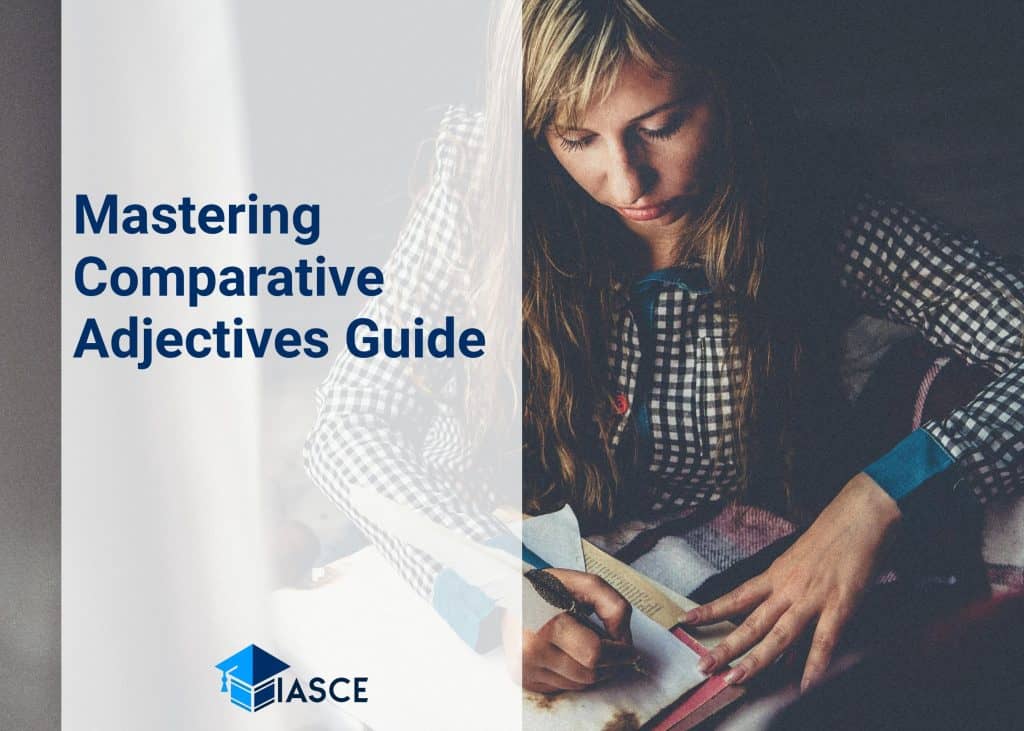Ever wondered how to perfectly navigate the world of comparative adjectives? Well, you’re in the right place. I’ll be your guide through this intricate linguistic landscape. With a bit of practice and patience, you’ll master these essential components of language.
Comparative adjectives can make or break a sentence – they’re that important! They give us the power to compare, contrast and distinguish between objects, people, places or ideas. Understanding their correct use not only boosts your English skills but also makes your communication more precise and effective.
Whether you’re learning English as a second language or just looking to polish up your grammar skills, getting a solid grip on comparative adjectives is vital. Let’s dive right into the nuances of mastering these critical linguistic tools.
Understanding Comparative Adjectives
Let’s dive in and uncover the mysteries of comparative adjectives. These linguistic tools are more than just language ornaments; they’re pivotal for effective communication, particularly when we’re comparing two or more things.
Essentially, comparative adjectives indicate a higher degree of something. They’re used to show differences and similarities between two entities. You might be familiar with examples like ‘bigger’, ‘smaller’, ‘faster’, or ‘slower’. The formation is simple: for one-syllable adjectives, we add ‘-er’ at the end, while for most multi-syllabic adjectives we use ‘more’ before the adjective itself.
Here’s a table to illustrate this point:
|
One-Syllable Adjective |
Comparative Form |
|---|---|
|
Fast |
Faster |
|
Small |
Smaller |
|
Multi-Syllabic Adjective |
Comparative Form |
|---|---|
|
Beautiful |
More beautiful |
|
Exciting |
More exciting |
Now, there are some exceptions you should know about. Some two-syllable adjectives can take either ‘-er’ or ‘more’, like ‘clever’. Others have irregular forms such as ‘good’ which becomes ‘better’.
Comparative adjectives also need to be paired with the word “than” when making direct comparisons. For instance, “My dog is bigger than your dog.” Without “than”, our comparison lacks context and clarity.
Just remember: practice makes perfect! Start incorporating comparative adjectives into your everyday speech or writing. Before you know it, you’ll master these useful linguistic tools effortlessly. Keep exploring English grammar with me – together we’ll unravel all its intricacies!
Practical Tips for Using Comparative Adjectives
So, you’re ready to delve into the world of comparative adjectives. I’m here to help with some practical tips that’ll have you mastering these linguistic tools in no time.
First off, remember that comparative adjectives are used when comparing two things. They often end in “-er,” or are paired with ‘more’ or ‘less’. For instance, “bigger”, “smaller”, “more intelligent”, and “less interesting”. It’s a simple yet powerful tool to make your speech or writing more dynamic.
Now, onto some key strategies.
-
Always ensure clarity: Make sure the comparison is clear by providing enough context. Saying “John is taller” begs the question – taller than whom? To avoid confusion, be specific: “John is taller than Sam.”
-
Keep it logical: Make comparisons between like items only—compare apples to apples, not oranges! Saying something like “My car runs smoother than any fruit” doesn’t quite hit the mark!
-
Match correctly: When using ‘more’ and ‘less’, pair them with multi-syllable words; it’s more natural to say “more beautiful” rather than beautifuller”.
Here’s a handy table illustrating these principles:
|
Incorrect Usage |
Correct Usage |
|---|---|
|
John is taller |
John is taller than Sam |
|
My car runs smoother than any fruit |
My car runs smoother than any other vehicle |
|
Beautifuller |
More beautiful |
Lastly, practice makes perfect! Try incorporating comparative adjectives into your everyday conversations or written communication—you’ll soon get the hang of it.
In this language journey of ours, every step brings us closer to eloquence so let’s keep moving forward! Remember that even though English grammar might feel complex at times, each new concept mastered makes our command over this global language stronger and our expression clearer.
Conclusion: Mastering Comparative Adjectives
Mastering comparative adjectives is no small feat, but it’s an essential part of becoming proficient in English. I’ve walked you through their intricacies, and I hope the information has been both engaging and useful.
It’s important to remember that practice is key when grappling with these grammatical elements. Like any new skill, they may seem intimidating at first. But with consistent effort, you’ll soon find yourself using them naturally in your conversations and writings.
You might be wondering, “What’s next?” Well, there’s always more to learn when it comes to language. Consider delving deeper into related topics such as superlative adjectives or comparative clauses.
In conclusion (and without starting my sentence with ‘In conclusion,’), let me say this: Language learning is a journey that never truly ends—there are always new words to discover, new phrases to try out, and new grammatical rules to master. And as you continue on this path of linguistic exploration and growth, remember that understanding how to properly use comparative adjectives will serve as a valuable tool in your communication arsenal.
Remember:
-
Practice makes perfect
-
Don’t be afraid of making mistakes
-
Keep exploring other areas of grammar
Keep learning and growing with the English language – it can only make you more articulate and effective in your communications!

